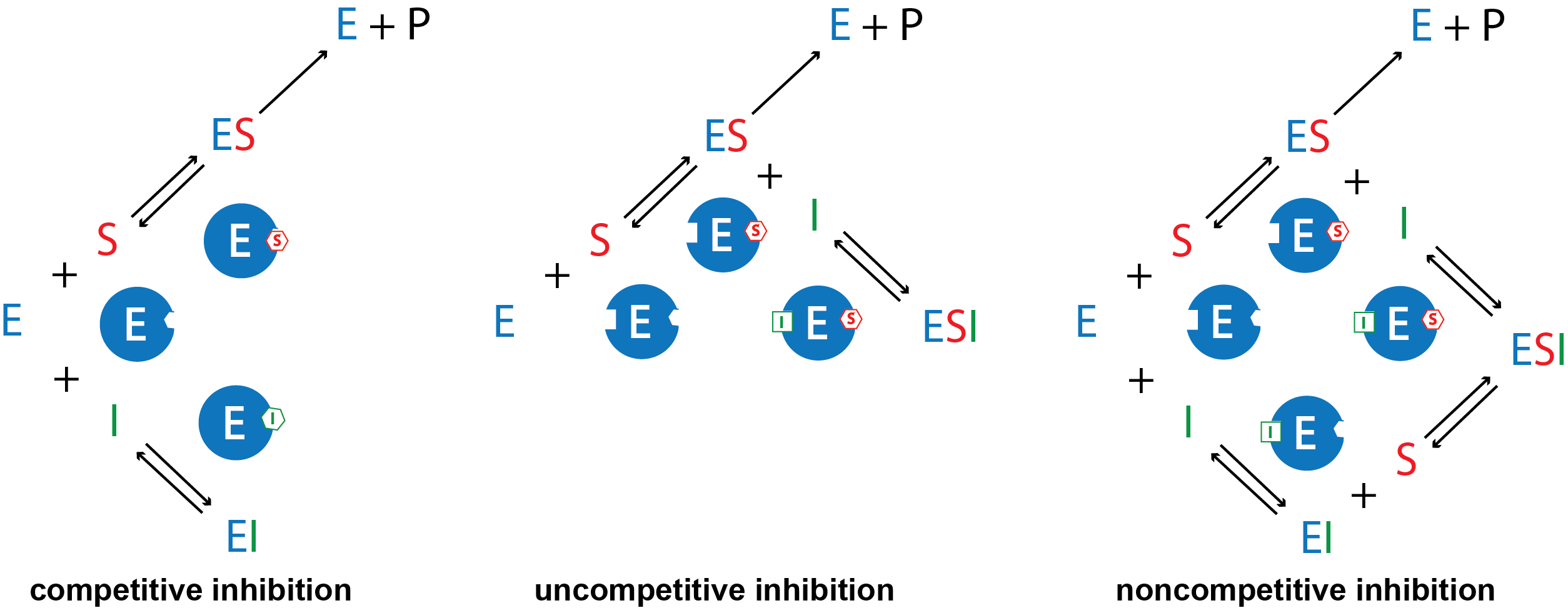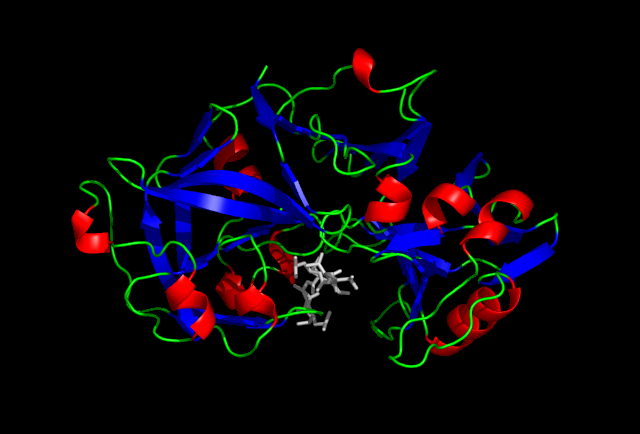D31.5 Enzyme Denaturation and Inhibitors
Denaturation is a process in which proteins lose their quaternary, tertiary and secondary structure. Enzymes must be folded into the right 3D shape to function. But noncovalent interactions, which play a crucial part in protein folding, are individually weak, and it does not take much heat, acidity, or other stress to break some of them and denature the enzyme.
Hence, enzyme catalyzed reactions exhibit an unusual temperature dependence. At relatively low temperatures, the reaction rate increases with temperature, as is expected. However, at higher temperatures, the reaction rate drops dramatically due to denaturation of the enzyme, as shown below.

Typically, enzymes will not denature at temperatures encountered by the living organism in which they are found. As a result, enzymes from bacteria living in high-temperature environments such as hot springs are prized by industrial users for their ability to function at higher temperatures.
Exercise: Enzyme Characteristics
An inhibitor interacts with an enzyme to decrease the enzyme’s catalytic efficiency. An irreversible inhibitor covalently binds to the enzyme’s active site, producing a permanent loss in catalytic efficiency even if the inhibitor’s concentration is later decreased. A reversible inhibitor forms a noncovalent complex with the enzyme, resulting in a temporary decrease in catalytic efficiency. Reducing the concentration of a reversible inhibitor returns the enzyme’s catalytic efficiency to its normal level.
There are several kinds of reversible inhibition. In competitive inhibition the substrate and the inhibitor compete for the same active site on the enzyme. Because the substrate cannot bind to an enzyme–inhibitor (EI) complex, the concentration of enzyme available to form enzyme-substrate (ES) complex is lower and the enzyme-catalyzed reaction is slower. With uncompetitive inhibition the inhibitor binds to the enzyme-substrate (ES) complex but not at the active site, forming an enzyme–substrate–inhibitor (ESI) complex. The formation of an ESI complex decreases catalytic efficiency because it reduces the concentration of ES, which reduces the rate of the rate-limiting step in the mechanism. Finally, in noncompetitive inhibition the inhibitor binds to both the enzyme itself and the enzyme–substrate complex at a site different from the active site. Similar to uncompetitive inhibition, this forms an inactive ESI complex and reduces the concentration of ES.

Activity: Enzyme Inhibition
Methanol (wood alcohol), CH3OH, is poisonous to humans because an enzyme, alcohol dehydrogenase, oxidizes methanol to formaldehyde, a very toxic substance. Methanol poisoning can be treated by giving a patient ethanol, CH3CH2OH, which inhibits the enzyme. Another student says that ethanol is a competitive inhibitor of the enzyme and that is why it is used to treat methanol poisoning. Write in your notebook a scientifically valid explanation that supports the student’s claim. Include in your explanation an analysis of the structures of methanol and ethanol and how the structures support the conclusion that ethanol is a competitive inhibitor.
Write in your notebook, then left-click here for an explanation.
Both ethanol and methanol are alcohols and can form strong hydrogen bonds. Hydrogen bonding is one type of noncovalent force that can bind a molecule to an enzyme’s active site. The methyl group in methanol and the ethyl group in ethanol are both nonpolar and could match with nonpolar regions in the enzyme. Ethanol has an extra CH2 group so the molecule is bigger than methanol. Nevertheless, it is likely that ethanol could also bind to the active site of alcohol dehydrogenase and compete with methanol for the active site.
When a patient is treated with ethanol, some ethanol binds reversibly to the active site. Thus, ethanol is a competitive inhibitor. Less alcohol dehydrogenase is available to bind to methanol, reducing the catalytic efficiency. Formaldehyde is produced at a slower rate, so the patient doesn’t get as sick.
Left-click here for more information on enzyme reactions
Watch this video for an example of how an enzyme works and why understanding enzyme action is important.
The digestive enzyme pepsin is an example of the class of enzymes known as aspartyl proteases. Proteases are enzymes that hydrolyze peptide bonds. Aspartyl proteases use two aspartate groups in the active site to cleave the bond. There is a water molecule bound in the active site of pepsin, and it is a cofactor. Many enzymes use cofactors such as water, Zn(II), Fe(II), and derivatives of vitamins in their reactions.

The AIDS virus produces an enzyme, HIV-1 protease, that carves up a large polypeptide precursor into several proteins essential for viral replication. Because of its importance to the virus, HIV-1 protease has been a target for drugs designed to inhibit it.
HIV-1 protease is an aspartyl protease, like pepsin. This means that peptide analogs that mimic the substrate will inhibit HIV-1 protease in a similar manner.
Because of the high rate of mutation of the AIDS virus, the use of single drugs is usually only effective for short time, since a strain of AIDS resistant to that drug develops quickly. The use of a combination of drugs such as protease inhibitors can overwhelm the ability of the AIDS virus to adapt. This is the origin of the “AIDS cocktail” that is currently helping AIDS patients lead nearly normal lives.
Please use this form to report any inconsistencies, errors, or other things you would like to change about this page. We appreciate your comments. 🙂 (Note that we cannot answer questions via the google form. If you have a question, please post it on Piazza.)

